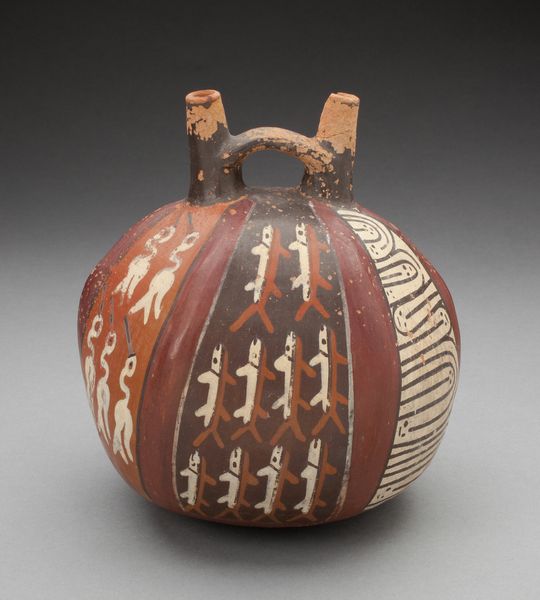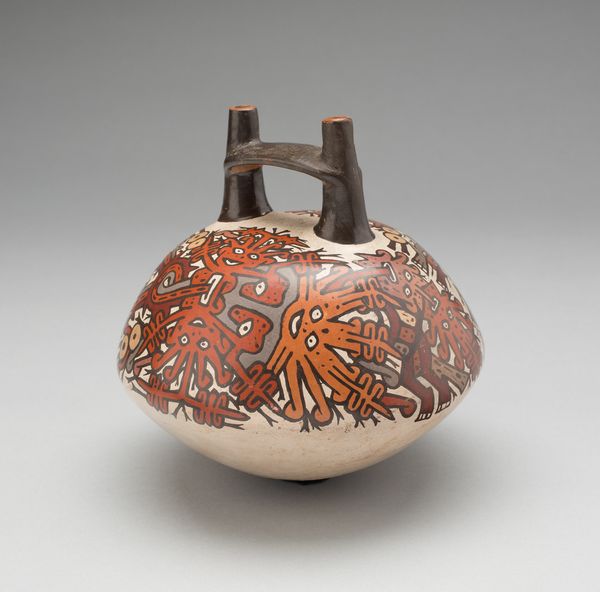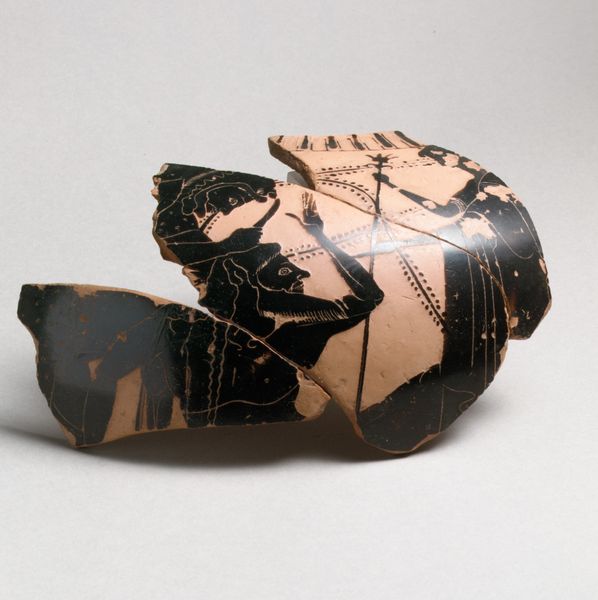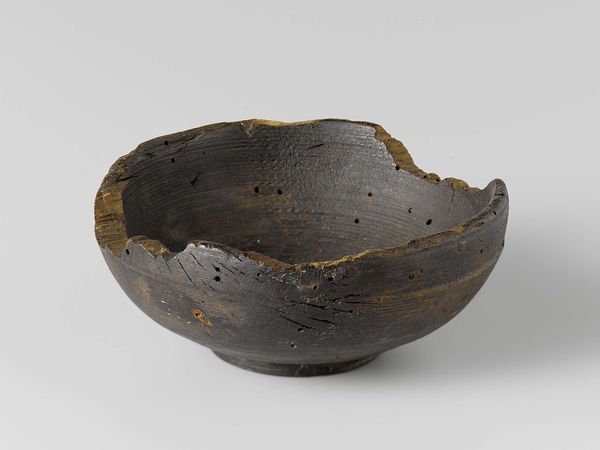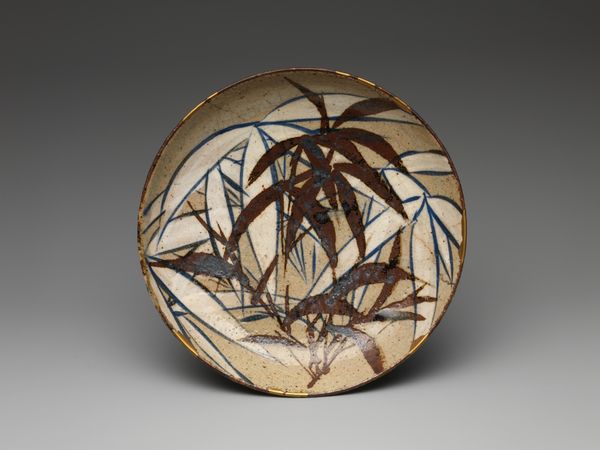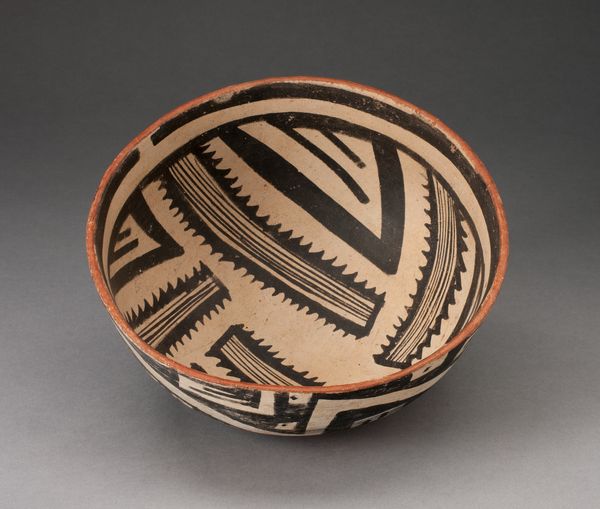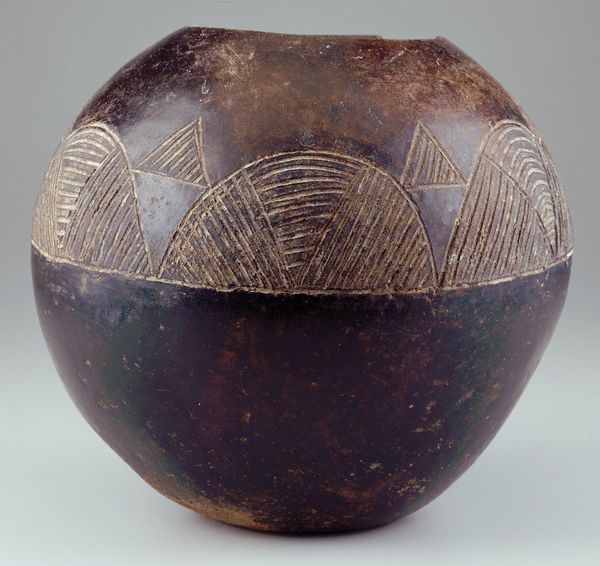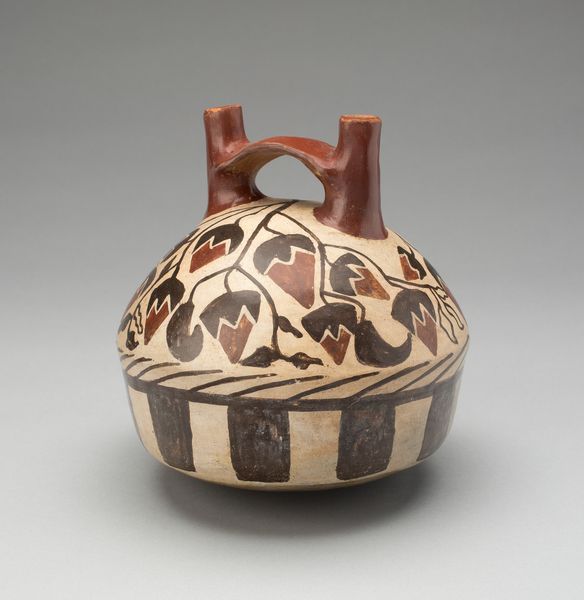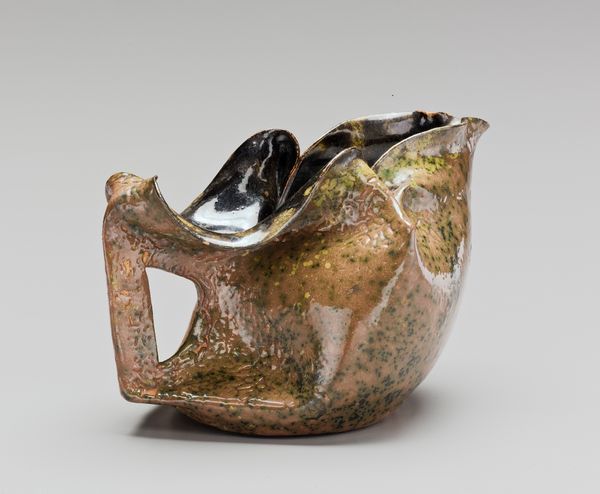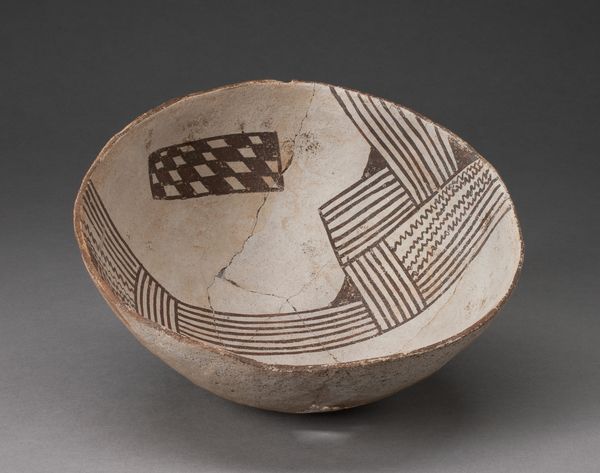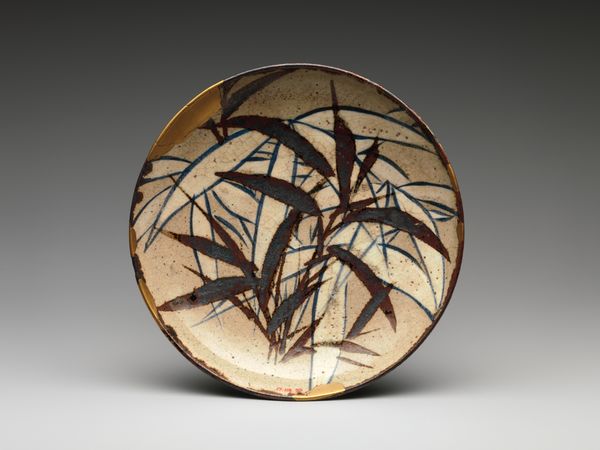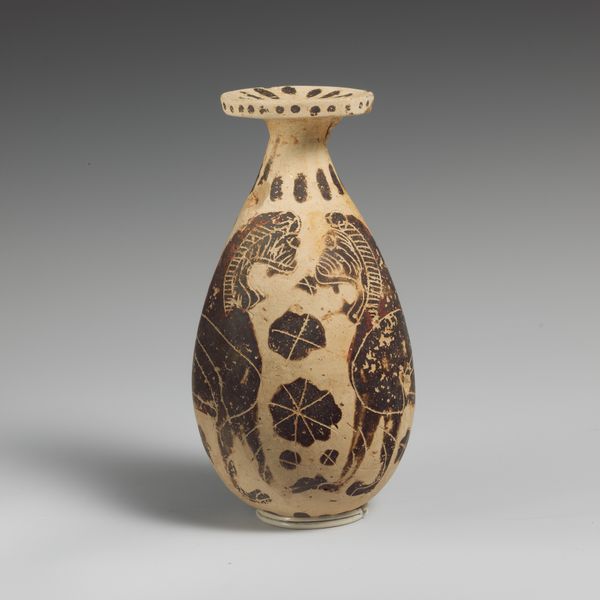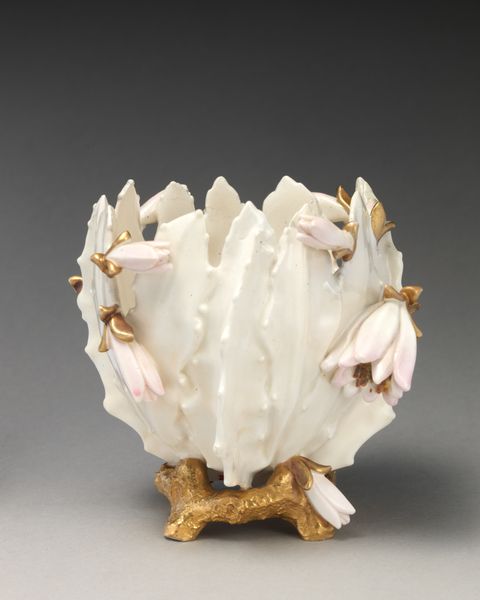
Bowl with Handle (Tebachi) with Bamboo in Snow Pattern 1800 - 1849
0:00
0:00
ceramic
#
asian-art
#
landscape
#
ceramic
#
stoneware
Dimensions: Diam. 27 in. (68.6 cm)
Copyright: Public Domain
Editor: Here we have *Bowl with Handle (Tebachi) with Bamboo in Snow Pattern*, created between 1800 and 1849 by Nin'ami Dōhachi. It's a stoneware piece currently housed at the Metropolitan Museum of Art. It gives such a sense of delicate movement, despite the rigid medium. How would you begin to interpret the aesthetic decisions at play in this work? Curator: Let us consider the interplay of form and surface. Note the stoneware body – its texture, the deliberate asymmetry of its shape, the subtle gradations of the glaze. Then consider how the painted decoration engages with this three-dimensional form. Do you observe how the bamboo motif doesn’t merely decorate, but seems to grow from the vessel itself, extending the form through line and shadow? Editor: I do see that! The lines of the bamboo sort of imply volume and curvature even when they’re just painted. Is that intentional, creating a unity? Curator: Precisely! The artist is using the inherent qualities of the material, coupled with representational imagery, to achieve a harmonious balance. Examine the brushwork. Loose, almost calligraphic. See how the white glaze interacts with the darker iron pigments? These contrasts are carefully controlled, emphasizing both spontaneity and structural integrity. Consider too, how the handle repeats and reinforces the curvature of the bowl. It echoes the broader formal language. Editor: So, the artist uses brushstrokes and shapes and colors not just to depict bamboo in snow, but to contribute to this overall effect of balance within the medium itself? Curator: Absolutely. The bowl presents a unity between image and object; surface and form. Every element—shape, texture, line—contributes to an aesthetic experience that transcends mere functionality. Editor: I think I understand how the artist used the visual language of painting and ceramics to make an aesthetic statement about form and balance. Curator: Indeed. It’s a superb example of how formal analysis can unlock layers of meaning and appreciation within a seemingly simple object.
Comments
No comments
Be the first to comment and join the conversation on the ultimate creative platform.
